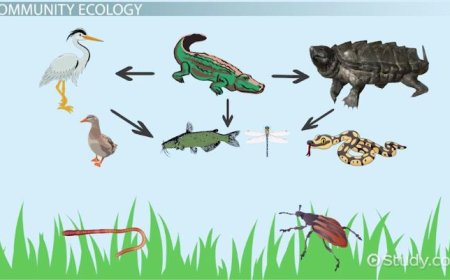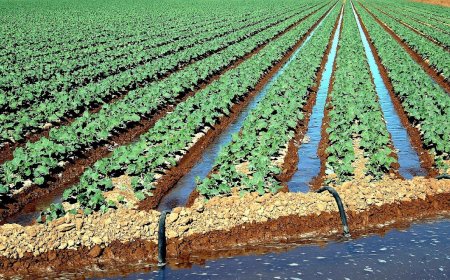Ocean Currents: Types, Causes, and Their Impact on Climate & Marine Life
Ocean currents are large-scale movements of seawater caused by wind, temperature, salinity differences, and Earth's rotation. They influence climate, support marine life, and impact coastal economies through fishing and trade."

What are ocean currents.
An ocean current is a horizontal movement of surface water in oceans and seas in a fairly defined, direction. The movement of surface water caused by friction between the wind and the surface water and therefore moving more or less in the direction of the wind and varying in position and strength with the seasonal winds are known as drifts.
Types of ocean currents.
There are three types of ocean currents:-
1. Warm-water current
2. Cold-water current
3. Return or compensating current.
Warm and cold ocean currents.
The terms warm and cold for ocean currents denote their temperature relative to that of the neighbouring atmosphere. A warm current is one that moves from regions of relatively warmer temperatures to regions of cooler temperatures. Thus warm currents move from the equator pole wards! e.g. the Mozambique current in the Indian Ocean and the Gulf Stream in the Atlantic Ocean. A cold current on the other hand moves from regions of relatively lower temperatures to regions of relatively higher temperatures. Thus cold currents move from the equator ward pole wards e.g. the Benguela current and Canary currents in the Atlantic Ocean.
Return or compensating currents.
Warm water moving pole ward ultimately cools and sinks and returns along the ocean bed as a bottomcurrent known as a return current.
Characteristics of ocean currents
Warm currents are characterised by warm temperature e.g. the Mozambique current flowing along the eastern African continent. Cold currents on the other hand are characterised by cold temperatures e.g. the Canary current along the Moroccan coast and the Benguela current along the Namibian, Angola and South African coasts. They are persistent i.e. water moves from one part of the ocean to another constantly.
Warm ocean currents move from the lower latitudes (equatorial regions) to the higher latitudes (poles) e.g. the Kuroshio Current on the Pacific coast of China and Japan, while cold currents move from higher latitudes to lower latitudes e.g. the Brazilian current along the South American coast.
Warm ocean currents are found mainly on the eastern sides of continents in low latitudes e.g. the Mozambique, Brazilian, Kuroshio and East Australian currents. In the middle latitudes they are found also on the western coasts e.g. the North Atlantic Drift along the coast of Western Europe such as United Kingdom, Norway Sweden and Denmark.
Cold ocean currents mainly flow on the westem sides of continents in low latitudes e.g. Peruvian, Benguela and Canary currents. In the middle latitudes they flow along the eastern coasts e.g. Labrador Current along the eastern Canadian coast and Kamchatka current along the eastern Russian coast in the Pacific Ocean.
Ocean currents circulate mostly in a clockwise direction in the northern hemisphere e.g. the Canary and Kuroshio currents while in the southern hemisphere the circulation of ocean currents is mostly in an anti-clockwise direction e.g. Peruvian, South Equatorial and Benguela currents.
In regions where the prevailing winds blow offshore, such as the west coast of Mexico and the coast of Peru and Chile, surface waters move away from the continents and they are replaced by colder, deeper water currents, a process known as up-welling, from as much as 300 m down.
As a result of the rotation of the earth, ocean currents are deflected to the right in the northern hemisphere and to the left in the southern Hemisphere.
Warm ocean currents transport warm conditions to regions they blow to while cold ocean currents transport cold conditions to regions they blow to.
Causes of ocean currents.
The primary causes of ocean circulation are discussed below;
Wind
Owing to the frictional effects of the wind upon the ocean surface, the thin layer of top water is driven slowly in the general direction of the air movement. For example in the Atlantic Ocean, the currents are driven by the North-East and South-East trades.
Temperature
Currents caused by differences in temperature are commonly refereed to as conventional currents. The water near the equator is warm and therefore less dense than that at the poles. As a result, conventional currents are set up. Warm water from the equatorial regions flows towards the poles where it is cooled, while cold water from the poles flows towards the equatorial regions.
Salinity
Contrasting densities of seawater, due to different salinities are responsible for slow movements or currents within large water masses. Water with high salinity is denser than of low salinity. It will thus flow to areas of low water salinity and vice versa. An example of a current due to a difference of salinity is the surface current, which enters the Mediterranean Sea from the Atlantic Ocean. Owing to little rainfall, high evaporation rates and a small number of in flowing rivers, the Mediterranean Sea has a higher salinity than the Atlantic sea. A relatively fresh surface current then flows into the Mediterranean from the Atlantic.
Coriolis force
Because of the coriolis force, the water drift is impelled towards the right of its path of motion (northern hemisphere).
The configuration of the coast
Both the north and south equatorial currents are deflected northwards and southwards respectively due to the shape of the land.
Effects of ocean currents on the climate
1. Temperature Regulation
- Warm ocean currents (e.g., the Gulf Stream, Mozambique Current) transport warm water from the equator to higher latitudes, raising temperatures in coastal areas.
- Cold ocean currents (e.g., the Benguela Current, Canary Current) carry cold water from polar regions toward the equator, lowering temperatures in adjacent coastal areas.
· For example, Durban (South Africa), influenced by the warm Mozambique Current, has an annual temperature 6°C higher than Port Nolloth, which is affected by the cold Benguela Current.
· Warm ocean currents raise the temperature of the adjacent lands. As winds blow over them, their temperature is raised and this warmth is transferred to the adjacent lands they blow to. On the other hand cold ocean currents lower the temperature of the adjacent lands they blow to.
· There is a striking difference between temperatures on the east and west coasts of South Africa. The east coast is influenced by the warm Mozambique Current and the west coast by the cold Benguela Current.
· This results in a temperature difference of 6°C in the mean annual temperatures of the city of Durban on the east coast and Port Nolloth on the west coast, which are at similar latitudes. Furthermore, Durban's July temperature is 18°C, which is 4.3°C higher than Swakopmund's 13.5°C at the same latitude.
· The cold Canaries current flowing southwards along the Moroccan Coast, often produces a fall in temperature. Casablanca for instance has a July average of 22°C, which is 4.4°C lower than Tripoli onthe same latitude.
· The North Atlantic drift raises the January temperature of the Coastlands of Western Europe by over 30°F above what it should be for that latitude. In North America, the winters of areas on the same latitude are harsh. For example the Hudson Bay freezes over, with January temperatures as low as- 24°F. Stockholm in Sweden lies at the same latitude as northern Labrador in Canada, although the climate of Sweden is much milder. Sweden's comparatively moderate climate results from the warming influence of winds blowing over the Gulf Stream, which sweep over Sweden from the North Atlantic Ocean. Similarly, the Port of Narvik in Norway lies north of the Arctic Circle, but the moderating influence of the Gulf Stream keeps the harbor free of ice year-round.
2.Rainfall and Humidity
- Warm currents increase humidity and rainfall, as they warm the air above them, allowing it to hold more moisture. Coastal areas experience higher precipitation and tropical climates. Example: West Africa’s heavy rainfall due to the warm Guinea Current.
- Cold currents reduce humidity and cause dry climates, as they cool the air above them, limiting its ability to hold moisture. Example: The Benguela Current causes low rainfall in Namibia and Angola, contributing to desert conditions.
· The warm ocean currents carry high humidity making the adjacent land masses they blow to be humid e.g. the warm Mozambique current at Mombasa and Dar es Salaam along the East African coast. Cold ocean currents on the other hand are associated with low humidity e.g. the Canaries current along the coast of Morocco.
· The warm ocean currents lead to the formation of heavy rainfall to the adjacent lands. As air masses blow over them, their temperature is raised leading to a greater absorbing capacity of the winds. The wind picks up moisture from the sea or ocean and on crossing the heated land surface heavy rainfall results e.g. the warm Mozambique current causes heavy rainfall along the eastern African coast down up to Durban. In west Africa rainfall is heavy and sometimes floods are the result.
· Cold ocean currents such as the Benguela current is responsible for the low rainfall received a long the coast of Namibia and Angola. The currents lower the temperature of wind blowing over them thus reducing their ability to hold moisture. This results in low rainfall. Similarly, the Canaries are responsible for the low rainfall along the coasts of Morocco and Western Sarara while the cold California current led to the occurrence of the Californian desert.
3.Fog Formation
· Cold ocean currents often lead to foggy conditions in coastal areas where warm, moist air meets cooler air above cold currents. Example: The Canary Current along the Moroccan coast frequently causes fog.
· The cool Canaries current, flowing southward along the Moroccan coast, often produces cloudy days and frequent fogs. Fog may also be formed when winds blow over a warm current and then over a cold land surface.
4. Extreme Climate Effects
- The North Atlantic Drift, an extension of the Gulf Stream, raises January temperatures in Western Europe by over 30°F, creating milder winters.
- El Niño, a periodic warm current in the Pacific, disrupts global weather patterns, causing droughts, floods, and storms worldwide.
Key Takeaways on Ocean Currents and Climate:
· Warm ocean currents increase temperatures and rainfall.
· Cold ocean currents lower temperatures and cause dry conditions.
· Upwelling from cold currents leads to foggy coastal regions.
· Extreme currents like El Niño affect global climate patterns.
Examples of ocean currents and their effect on climate
Benguela and Canary currents.
Ocean currents affect the climate of the Atlantic Coast from South Africa to southern Angola, and from southern Morocco to Mauritania. The former is affected by the Benguela Current while the latter is influenced by the Canaries Current. These cold ocean currents result in somewhat cooler temperatures, very low rainfall, and the frequent occurrence of fog near the coast. Elsewhere, an area of surprisingly low rainfall along the coast near Accra, Ghana, has been attributed to localized up welling of cold water.
Warm Gulf Stream
This in the North Atlantic Ocean flows in a generally north-eastern direction from the Straits of Florida to the Grand Banks, east and south of Newfoundland and Labrador. The current extends to include the North Atlantic Drift, which flows from the Grand Banks to the shores of Western Europe, Scandinavia, and the islands of the Arctic Ocean. The current is of great climatological importance because of its moderating effects on the climate of Western Europe.
The effect of the combined action of ocean currents and the prevailing winds is most marked in the case of the Gulf Stream and the North Atlantic Drift, where the ocean current and the westerly winds combine to raise the January temperature of the coastlands of Western Europe by over 30°F above what it should be for the latitude. In North America, the winters of areas on the same latitude are harsh.The Hudson Bay freezes over, with January temperature as low as -24° F and the area is uninhabited except for trappers. In Western Europe, the January temperature averages about 38° F. The current warms western Britain as high as 45°F. The warm water of the North Atlantic Drift extends northwards past the fiords of Norway and the Arctic circle as far as North Cape, resulting in ice free conditions throughout the winter.
Kuroshio Current
This current is also known as Japan Current. It is a warm current in the western Pacific Ocean, which flows northeast from the Philippines along the eastern coast of Japan. Near northern Japan, the Kuroshio merges with a cold, south-eastern current. The two currents become the North Pacific Current, which runs east through the Pacific Ocean and brings mild temperatures to the west coast of North America. The Kuroshio Current carries tropical waters and heat energy into the temperate latitudes along the east coast of Asia.
El Nino Current
Another perhaps more spectacular effect of ocean currents on temperature and rainfall is found on the coast of Peru, which for the greater part of the year is washed by the Cold Humboldt or Peruvian Current as far north as 5° South. Every year a seasonal warm current, called El Nino, appears between December and March and, moving southwards as far as Chimbote, generally spreads like a thin film over the cold current and is soon dispersed.
Occasionally it is stronger and extends as far as south as Northern Chile. The sudden change in the temperature of the water kills large numbers of fish and causes a marked change in the climate of the coast. Normally, the coast is desert with little or no rain and with temperatures lowered by the cold-water off-shore, but the El Nino current brings higher temperatures and the heavy rain typical rain forest climate immediately to the north.
There is a marked effect on the inhabitants who living normally in dry desert air, have little resistance to the disease which are rife in the humid hot conditions brought by El Nino, and the heavy rainfall destroys roads, houses and railways constructed to withstand typical desert conditions.
The contact between warm and cold currents has important results, particularly where the cold current comes from arctic waters. The warm temperatures of the warm current accelerate the rate at which ice- bergs melt and hence cause sand banks, constructed of the debris brought by the ice-bergs, to form; the Grand Banks off Newfound land were formed in this way by the meeting of the cold Labrador current and warm Gulf Stream. At the same time, the mixing of the air over these currents causes fogs.
Effects of ocean currents on human activities along the coast.
Fishing
Cold ocean currents moving equator ward are replaced by colder, deeper water a process known as up- welling. This deep water is rich in nutrients such as plankton, and these regions provide excellent fishing grounds. The chief fishing grounds of the world occur in regions where up-welling of cold water occurs or where cold and warm currents meet.
Many fish feed on plankton. These require nitrates and phosphates, sunlight and well-aerated water. Cold currents are rich in nitrates and phosphates hence attract large quantities of fish and form important fishing grounds. For example, the coastlines of Morocco, Namibia, Mauritania and South Africa form the richest fishing grounds in Africa.
The meeting of warm and cold currents causes water to become well aerated. It is understandable therefore, why such areas form the richest fishing grounds of the world. These areas include Japan where the warm Kuroshio and cold Oyashio currents meet, North West Atlantic fishing ground where the cold Labrador Current and warm Gulf Stream meet.
Agriculture.
Ocean currents influence agriculture in several ways:-
Warm ocean currents as earlier stated lead to the formation of rainfall along the adjacent coastlines This has enabled the growing of various crops like Maize, rice, sugar and others. In Natal region for example sugar canes can be grown as far south as latitude 300 due to the climatic effect of the warm Mozambique current.
This has resulted in the establishment of many sugar processing industries. Cold ocean currents on the other hand have an effect increasing the aridity of the adjacent lands. The coastal lands therefore tend to be arid and unutilized for arable farming. Namibian coasts are briefly used by herders during the rainy seasons.
Forestry
Winds blowing over warm ocean currents cause rainfall to the adjacent lands. In West Africa, winds blowing over the warm Guinea current cause a lot of rainfall to the adjacent lands. This has enabled the growth of forests. Mangrove forests form a narrow strip along the coast while behind them lies a belt of rainforests. This has given rise to forestry coastal areas of Ghana, Nigeria, Ivory Coast and Liberia are the most important areas of commercial timber production. Timber processing industries have also sprung up. The forests however can be habitants of dangerous pests affecting man.
Coral reefs
Warm currents among other factors favour the growth of coral reefs. Corals are mainly found on the eastern sides of continents where warm currents prevail. Along the eastern African coast corals occur in Kenya, Tanzania and Mozambique because the warm Mozambique current raises temperatures of the water above 20°C. In Kenya, coral reefs are being used in the manufacturing of cement at Bamburi near Mombasa. Coral reefs are also a great tourist attraction giving rise to tourism in the Seychelles Islands and Mombasa.
Settlement.
Low rainfall and its unreliability discourage settlement. Areas like the Namib coast are thinly populated because of low rainfall. The low rainfall is attributed to the cold Benguela current. On the other hand heavy rainfall as on the West African coast encourages settlement. This high rainfall is partly attributed to the warm Guinea current.
FAQs
1. Draw the pattern of major ocean currents of the world.
The pattern of major ocean currents follows a circular movement, with warm currents moving away from the equator and cold currents returning toward it. In the Northern Hemisphere, ocean currents circulate clockwise, while in the Southern Hemisphere, they circulate counterclockwise. Some examples include:
- Warm Currents: Gulf Stream (Atlantic Ocean), Kuroshio Current (Pacific Ocean), Mozambique Current (Indian Ocean).
- Cold Currents: Canary Current (Atlantic Ocean), Benguela Current (Atlantic Ocean), Labrador Current (Atlantic Ocean).
- Return Currents: Cold bottom currents that move toward the equator after cooling in polar regions.
2. Explain the causes of the world circulation of ocean waters.
The circulation of ocean waters is driven by:
- Wind: Surface ocean currents are driven by prevailing winds such as the North-East and South-East trade winds.
- Temperature Differences: Warm water from the equator moves poleward while cold water from the poles moves toward the equator, creating convection currents.
- Salinity Differences: Water with higher salinity is denser and sinks, while less saline water moves in to replace it, causing movement.
- Coriolis Effect: The Earth’s rotation causes ocean currents to be deflected to the right in the Northern Hemisphere and to the left in the Southern Hemisphere.
- Coastline Configuration: Landmasses obstruct and redirect ocean currents, influencing their movement.
3. Describe the characteristics of ocean currents and assess their effects on the climate of Africa's coastlands.
Characteristics of ocean currents include:
- Warm currents move from the equator toward the poles, e.g., Mozambique Current.
- Cold currents move from polar regions toward the equator, e.g., Benguela Current.
- Ocean currents are persistent, meaning they flow constantly in certain patterns.
- Currents influence climate:
- Warm currents raise temperatures and humidity, leading to more rainfall, e.g., the Mozambique Current contributes to rainfall along the East African coast.
- Cold currents lower temperatures and humidity, reducing rainfall, e.g., the Benguela Current leads to dry conditions along the Namibian coast.
4. Giving specific examples, examine the influence of ocean currents on the economic activities along the coastal regions of Africa.
Ocean currents affect economic activities in various ways:
- Fishing: Cold currents like the Benguela and Canary currents support upwelling, bringing nutrient-rich water that enhances fish populations. This has made the coasts of Morocco, Namibia, and South Africa major fishing zones.
- Agriculture: Warm currents increase rainfall, benefiting farming. For example, the Mozambique Current supports sugarcane farming in Natal, South Africa.
- Forestry: The warm Guinea Current leads to high rainfall in West Africa, supporting timber production in Ghana, Nigeria, and Liberia.
- Tourism: Warm currents promote coral reef growth, which attracts tourists. The warm Mozambique Current supports coral reefs in Kenya, Tanzania, and Mozambique.
- Settlement: Areas influenced by warm currents have higher population densities due to favorable conditions, whereas cold-current regions, such as the Namib coast, remain sparsely populated due to low rainfall.
5. Describe the characteristics of a warm ocean current.
- Warm currents flow from equatorial regions toward the poles.
- They carry warm water and increase temperatures of nearby land.
- They are found on the eastern sides of continents in low latitudes (e.g., the Mozambique Current) and on the western coasts in mid-latitudes (e.g., the North Atlantic Drift).
- They cause high humidity and increased rainfall.
- They promote coral reef formation and dense coastal vegetation.
6. With reference to specific examples, explain the influence of warm ocean currents on the climate of adjacent land masses.
- Warm ocean currents increase temperatures: The North Atlantic Drift raises temperatures in Western Europe, keeping ports like Narvik in Norway ice-free year-round.
- They lead to high humidity and rainfall: The Mozambique Current brings heavy rainfall along the East African coast, benefiting cities like Mombasa and Dar es Salaam.
- They moderate cold temperatures: The Gulf Stream ensures that Western Europe experiences milder winters compared to areas in North America at the same latitude.
- They contribute to fog formation where they meet cold air masses.
7. Describe the characteristics of a cold ocean current.
- Cold currents flow from polar regions toward the equator.
- They lower temperatures of adjacent land areas.
- They are found on the western sides of continents in low latitudes (e.g., the Canary and Benguela currents).
- They reduce humidity and cause arid conditions.
- They support rich marine ecosystems by bringing up nutrients from deep waters (upwelling).
8. With reference to specific examples, explain the influence of cold ocean currents on the climate of adjacent land masses.
- Cold currents lower temperatures: The Benguela Current cools the southwestern coast of Africa, creating dry conditions in Namibia.
- They reduce rainfall: The Canary Current leads to dry conditions along the Moroccan coast, contributing to desertification in the Sahara region.
- They cause fog: The interaction between the cold Canaries Current and warm air from the land leads to frequent fog along the Moroccan coast.
- They limit settlement: The Namib coast, affected by the Benguela Current, remains sparsely populated due to arid conditions.
9. How do ocean currents affect climate?
Ocean currents play a crucial role in regulating global climate by distributing heat from the equator to the poles. Warm currents (like the Gulf Stream) bring warm, moist air to coastal regions, leading to milder winters and more rainfall. Cold currents (like the Canary Current) cool the air above them, leading to dry conditions and even desert formation. Changes in ocean currents, such as El Niño and La Niña, can cause extreme weather events like droughts, floods, and hurricanes.
10. What is the difference between warm and cold ocean currents?
- Warm ocean currents originate from equatorial regions and move toward the poles, carrying warm water. Example: Gulf Stream, Kuroshio Current.
- Cold ocean currents originate from polar regions and move toward the equator, carrying cold water. Example: California Current, Labrador Current.
Warm currents generally increase temperature and rainfall along coasts, while cold currents cool the air and reduce precipitation.
11. What are the economic benefits of ocean currents?
Ocean currents support several industries and economic activities, including:
- Fishing – Currents help circulate nutrients, supporting marine life and fisheries. Example: Peru's fishing industry benefits from the Humboldt Current.
- Shipping & Trade – Currents like the Gulf Stream and Kuroshio help ships navigate efficiently, reducing fuel costs.
- Tourism – Warm currents support coral reefs and attract tourists for activities like scuba diving and surfing.
- Renewable Energy – Ocean currents can be harnessed for electricity generation using underwater turbines.
- Climate Regulation – Stable ocean currents help maintain favorable conditions for agriculture and settlement.
Conclusion
Ocean currents play a crucial role in shaping the climate, economy, and environment of coastal regions worldwide. Their movement, driven by factors such as wind, temperature, salinity, and the Earth's rotation, leads to significant climatic variations, influencing rainfall, humidity, and temperatures. Warm currents, such as the Mozambique and Gulf Stream, bring warmth and moisture, supporting agriculture, forestry, and human settlement, while cold currents, like the Benguela and Canary, contribute to arid conditions and create rich fishing grounds through upwelling. The interaction of warm and cold currents also affects marine biodiversity, fog formation, and the melting of icebergs. Understanding ocean currents is essential for managing coastal resources, mitigating climate impacts, and optimizing economic activities such as fishing, tourism, and maritime transport.










































